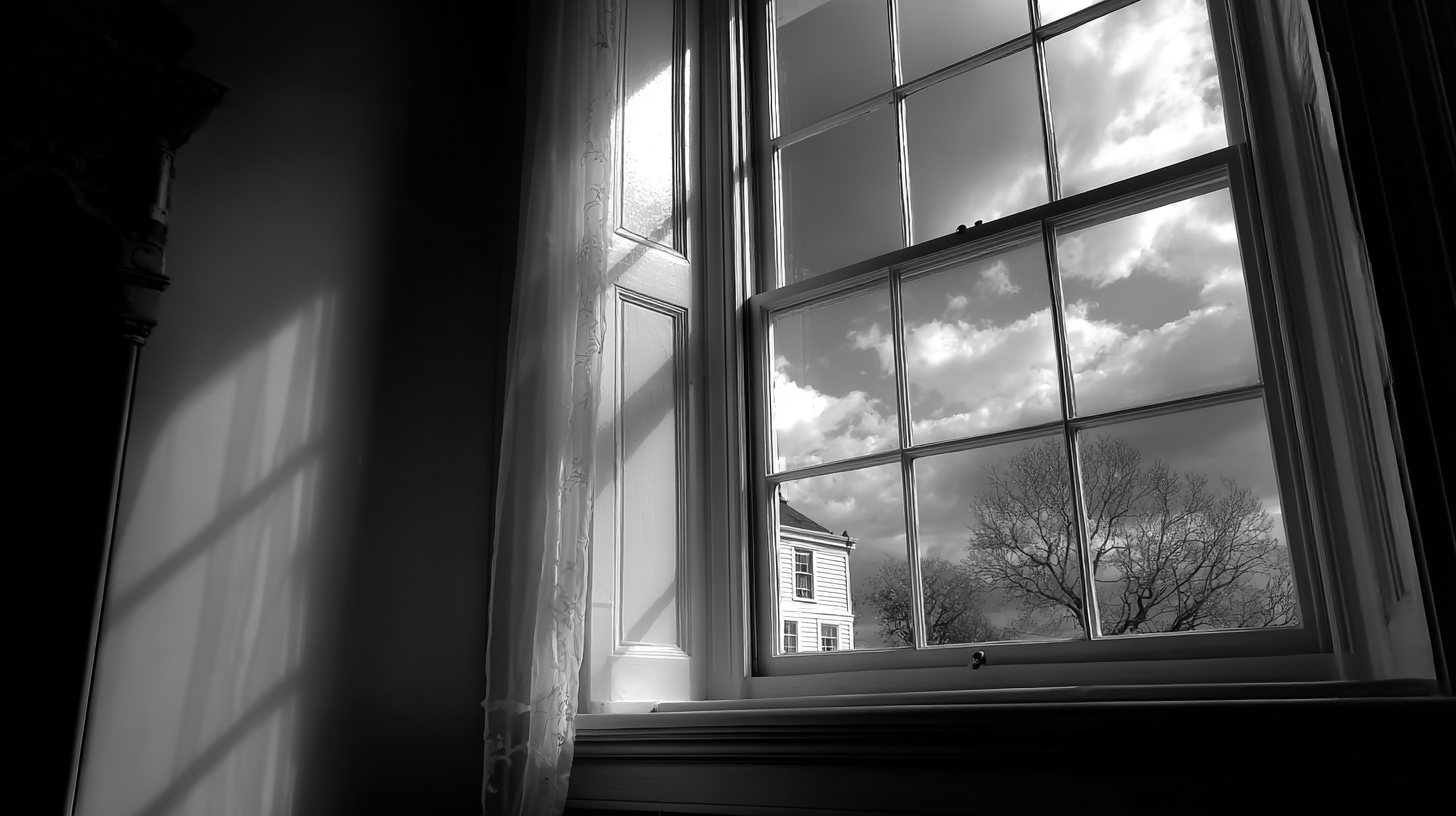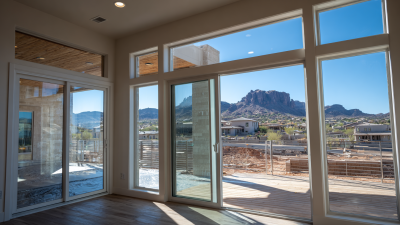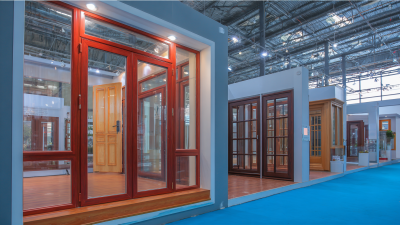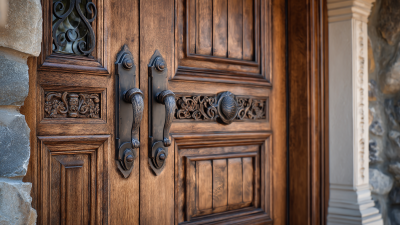The Ultimate Guide to Choosing Quality Windows for Your Home Efficiency
In today's quest for optimal home efficiency, the significance of selecting quality windows cannot be overstated. According to the U.S. Department of Energy, upgrading to high-performance windows can reduce energy bills by 7-15%, underscoring their critical role in energy conservation. The Energy Information Administration also highlights that windows account for about 25-30% of residential heating and cooling energy use.

Furthermore, a report by the National Fenestration Rating Council emphasizes that quality windows not only enhance a home's aesthetic appeal but also contribute significantly to indoor comfort and lower energy consumption. As homeowners consider renovations or new constructions, understanding the diverse options available in quality windows will prove essential, leading to better energy efficiency, increased property value, and a reduced carbon footprint.
Understanding the Impact of Window Energy Ratings on Home Efficiency
Choosing the right windows for your home is crucial for maximizing energy efficiency, and understanding window energy ratings is vital in this process. These ratings, often labeled as Energy Star or similar classifications, indicate the window's performance in areas such as insulation, solar heat gain, and air leakage. A higher rating typically reflects better energy-saving properties, which can significantly reduce heating and cooling costs, enhance indoor comfort, and lower your carbon footprint.

Incorporating windows with high energy ratings not only contributes to a sustainable living environment but also leads to long-term financial savings. Homeowners should pay attention to metrics like U-factor, which measures thermal conductivity, and solar heat gain coefficient (SHGC), which determines how much solar radiation passes through the window. By selecting windows with optimal ratings tailored to your climate, you can create a more energy-efficient home that balances natural light and insulation, ultimately improving your overall living experience.
Top 5 Window Materials: Pros and Cons for Optimal Insulation
When selecting windows for optimal home efficiency, it's essential to consider the material used, as it significantly influences insulation performance. The top five materials—wood, vinyl, fiberglass, aluminum, and composite—each come with distinct advantages and disadvantages.
Wood windows offer excellent insulation properties and a classic aesthetic, making them a popular choice. However, they require regular maintenance to prevent rot and decay. Vinyl is an affordable option that provides decent insulation and low maintenance, although it may not be as visually appealing or durable in extreme conditions. In contrast, fiberglass windows are highly durable and energy-efficient, but they can be more expensive.
Aluminum windows are known for their strength and minimal upkeep, yet they can conduct heat and cold, leading to lower insulation performance. On the other hand, composite materials combine wood and plastic, delivering good insulation and durability without the extensive maintenance associated with wood. By weighing these pros and cons, homeowners can make informed decisions that enhance their home's efficiency.

How Double Glazing Can Reduce Heat Loss by Up to 50%
When it comes to improving your home's energy efficiency, investing in quality windows is essential. Double glazing has emerged as a popular choice among homeowners due to its remarkable ability to reduce heat loss by up to 50%. This innovative window technology consists of two panes of glass separated by a space filled with inert gas, which acts as an insulating barrier. As a result, double glazing effectively minimizes heat transfer, keeping your home warm in the winter and cool in the summer, ultimately reducing your energy bills.
Tips for selecting the right double-glazed windows include considering the U-value, which measures heat transfer. Look for windows with a lower U-value, as they provide better insulation. Additionally, check for ventilation options in your windows, allowing for fresh air circulation without compromising efficiency. Lastly, choose a reputable supplier who offers energy-efficient window installations and warranties, ensuring long-term performance and reliability.
Incorporating double glazed windows into your home not only enhances comfort but also boosts its overall value. They are a wise investment that pays off through reduced energy costs and an improved living environment. Make the switch to double glazing today and experience the difference it can make for your home efficiency.
The Ultimate Guide to Choosing Quality Windows for Your Home Efficiency - How Double Glazing Can Reduce Heat Loss by Up to 50%
| Window Type | U-Value (W/m²K) | Estimated Heat Loss (kWh/year) | Average Cost per Window | Energy Efficiency Rating |
|---|---|---|---|---|
| Single Glazed | 5.3 | 1500 | $200 | D |
| Double Glazed | 2.8 | 800 | $400 | B |
| Triple Glazed | 1.2 | 500 | $600 | A+ |
| Low-E Double Glazing | 1.5 | 600 | $450 | A |
The Role of Low-E Coatings in Enhancing Energy Performance of Windows
When selecting windows for your home, understanding the role of Low-E (low emissivity) coatings can greatly enhance your energy performance. These specialized coatings are designed to minimize the amount of infrared and ultraviolet light that can pass through the glass without compromising the amount of visible light transmitted. This means that during the sweltering summer months, your home remains cooler, and during the frigid winter, the heat stays indoors. By reflecting heat back towards its source, Low-E coatings help maintain a comfortable indoor environment while reducing energy costs.
Tips: When shopping for windows, look for products with a high Solar Heat Gain Coefficient (SHGC) if you live in a colder climate, as this allows more heat inside during winter. Conversely, in warmer climates, opt for a low SHGC to keep your home cool and reduce air conditioning expenses. Always check for ENERGY STAR ratings, which indicate that the windows meet strict energy efficiency guidelines.
In addition to energy savings, Low-E coatings can also protect your furnishings and artwork from fading by blocking harmful UV rays. This not only preserves the aesthetic of your home but also prolongs the life of your interior finishes. When choosing window coverings, consider complementary options that work with Low-E technology to further enhance your home's energy efficiency.
5 Essential Tips for Choosing the Right Window Style for Energy Savings
When it comes to enhancing your home's energy efficiency, selecting the right window style is crucial. One essential tip is to consider window glazing. Double or triple-glazed windows offer better insulation than single-pane alternatives, significantly reducing heat loss in winter and keeping your home cooler in summer. Look for windows that have a low 'u-value', which measures thermal transmittance; the lower the value, the better the insulation, translating to lower energy bills.
Another factor to consider is the frame material. Vinyl, fiberglass, and wood frames each come with distinct energy-efficient properties; for example, vinyl frames are not only affordable but also resist fading and maintain their insulation properties over time. Additionally, window orientation plays a critical role. South-facing windows can harness solar heat during winter, while overhangs or awnings can provide shade in the hotter months. By carefully examining these elements, you can select windows that not only enhance aesthetic appeal but also contribute significantly to your home's energy efficiency.
The Ultimate Guide to Choosing Quality Windows for Your Home Efficiency
This chart displays the energy efficiency ratings for different window styles based on a scale of 1 to 10. Selecting the right window style can significantly enhance your home's energy savings and efficiency.
Related Posts
-

The Impact of Quality Windows on Energy Savings and Home Comfort in Modern Construction
-

Exploring Opportunities for Glass Companies at the 138th China Import and Export Fair in 2025
-

Exploring Opportunities for Residential Doors and Windows at the 138th China Import and Export Fair 2025
-

Why Choosing the Right Home Doors Can Transform Your Living Space
-

The Ultimate Guide to Choosing the Best Glass Windows for Your Home
-

Unlocking the Value of Quality Doors in Modern Home Design
- © Copyright
- Andy's Glass & Window Company
- All Rights Reserved
- Blog